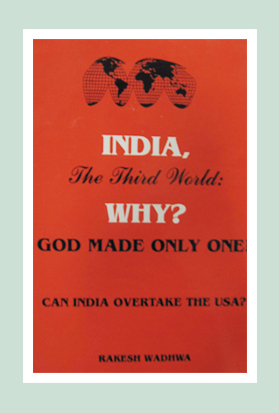60 Years of Economic Growth In Five-year Installments

When India first won its Independence, it still had a long way to go before it could become self-sufficient. Carving out large chunks of industry and commerce as state-run establishments under the socialist structure that our nation’s leaders outlined seemed like the best way forward. And now, 60 years later, we are still following the communist leader Joseph Stalin’s model of chalking out five year plans for economic growth! Currently, India is under its twelfth five-year plan, which will end in 2017. Let’s look at the main points of focus of these five year plans individually.
Take Five; Then Another, and Another…
The first Five Year Plan just looked at development of agriculture and primary sectors. The second had public sector industry on the agenda, and was based on a closed economy with emphasis on the import of capital goods. The third and fourth focused on agriculture and ushered in the much lauded green revolution. State education boards and electricity boards got special emphasis. This was also when India devalued the rupee to increase exports in the country and inflation first raised its ugly head.
The fourth Five Year Plan was when the government nationalized everything it could lay its hands on. In a bid at course correction, the fifth Five Year Plan talked about self-reliance in agriculture, introduction and development of national highways and emphasis on defense sectors.
The fifth and sixth plans were buffeted by disagreements between the Congress and the ruling Janta party and a rolling plan with targets being revised every year laid the foundation of economic instability. By the time the sixth plan was introduced in 1980, economic liberalization seemed the only way to replace the earlier philosophy of frugal scarcity. This was perhaps the main reason this plan was the foundation for follow-through in the sixth plan.
Proactive Vs Reactive Planning
Despite the fact that the genesis of five-year plans seems to be constructed to synchronize with the five-year tenure of Prime Ministers in India, the country still hasn’t had its fill of five year plans! In 1991, when the country was on the brink of bankruptcy, liberalization, globalization and privatization suddenly became buzzwords for economic reform. Here again, India was taking a leaf from the twin reform philosophies of glasnost and perestroika that the USSR was attempting. Strange as it might seem, India became a part of the World Trade Organization (WTO) as late as 1995. Not that the objectives set by the WTO were anything new. They included population control, poverty reduction, weak infrastructure, unemployment and decentralization. Similarly, the ninth Five Year Plan did not suggest anything new but simply included events such as the mass protests against reservation and quota seemed to cancel out what the media called ‘the end of license raj.’
There is a strange sort of consensus that the Indian Government follows in its planning and even thinking. When events occur, the Government simply adds it to their list of objectives in a bid to pacify the disgruntled. If enough people make a fuss, it must be important, seems to be their yardstick for reform. These decisions are not motivated by a vision of a solution but aggregates the importance of the problem on the basis of public opinion. This happens to be one of the unfortunate side-effects of democratic thought. That if enough people insist, then it must be something important. India’s political history is full of such crowd appeasement measures and regrettably, so is most of our current economic planning.
Habits Die Hard
India still hasn’t mastered the transition from being a closed economy to reacting to global shifts and trends with a clear vision of the future. We are still many points short of being a truly proactive economy and for the twelfth Five Year Plan to work, we will have to look far beyond our narrow field of vision.
 Rakesh Wadhwa. Ever since, I was a school boy, I knew India was on the wrong path. Socialism was just not what we needed to get ahead. Government controlled our travel; government controlled our ability to buy and sell; and government controlled our freedom to move our money. My life has focused on the inherent rights people have. When I was in college, I never understood, what the governments meant by their "socialistic attitude". If people are free to buy, sell and move their capital themselves without any restrictions by state, then the welfare of people is inevitable & hence the countries they live in will become wealthy. The government has no right whatsoever, to point a finger at me or my business. I am not a revolutionary. I just want to light up my cigarette and not get nagged about it. I believe in non-interfering attitude to attain more.
Rakesh Wadhwa. Ever since, I was a school boy, I knew India was on the wrong path. Socialism was just not what we needed to get ahead. Government controlled our travel; government controlled our ability to buy and sell; and government controlled our freedom to move our money. My life has focused on the inherent rights people have. When I was in college, I never understood, what the governments meant by their "socialistic attitude". If people are free to buy, sell and move their capital themselves without any restrictions by state, then the welfare of people is inevitable & hence the countries they live in will become wealthy. The government has no right whatsoever, to point a finger at me or my business. I am not a revolutionary. I just want to light up my cigarette and not get nagged about it. I believe in non-interfering attitude to attain more. 
 The Bastiat Award is a journalism award, given annually by the International Policy Network, London. Bastiat Prize entries are judged on intellectual content, the persuasiveness of the language used and the type of publication in which they appear. Rakesh Wadhwa won the 3rd prize (a cash award of $1,000 and a candlestick), in 2006.
The Bastiat Award is a journalism award, given annually by the International Policy Network, London. Bastiat Prize entries are judged on intellectual content, the persuasiveness of the language used and the type of publication in which they appear. Rakesh Wadhwa won the 3rd prize (a cash award of $1,000 and a candlestick), in 2006.
What the readers are saying…